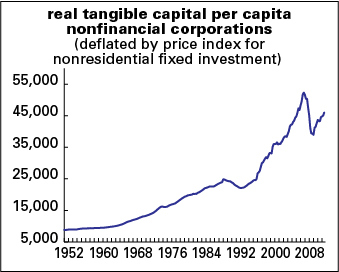StudentsFirst, the school “reform” outfit led by the notorious Michelle Rhee, is out with a state-by-state Report Card on the nation’s schools. Grades were awarded on the basis of states’ conformity to the standard reform agenda—ease of creating charter schools, ease of firing teachers, ease of hiring teachers who aren’t certified in the traditional fashion, and testing testing testing. In the past, there’s never been any evidence that this agenda actually improves educational outcomes—and this report is no exception. Despite Rhee’s love of testing, there’s no mention of how states that do well under her criteria do on standardized tests compared to those that score poorly. That’s no surprise, really, since states that get high grades from StudentsFirst do worse on tests than those that score poorly.
Rhee’s group gave letter grades to each state, along with a GPA that allowed them to be ranked from 1 to 51. (DC counts as a state here.) No state got a grade higher than a B-, and only two states made that grade. Eleven states got an F. Tough! But do these grades mean anything?
To evaluate the StudentsFirst grades, I got 8th grade reading and math scores from the National Assessment of Educational Progress, aka NAEP, the Nation’s Report Card. Testing can be a debased pursuit when it’s used to measure individual schools and teachers (sample sizes are just too small, and there’s too much statistical noise from year to year to base anything on), but the NAEP is as good as they come for measuring broad trends.
Here are the results. StudentsFirst has Louisiana at #1 in its rankings—but the state ranks 49th in reading and 47th in math. North Dakota, which StudentsFirst ranks 51st, comes in at #14 in reading scores and #7 in math. Massachusetts, which ranks #1 in both reading and math scores (and which is also the most unionized state for teachers in the country), comes in at #14 on the Rhee scale.
Looking more rigorously at the results, the correlation coefficient on the rankings in the StudentsFirst report card with state rankings on reading scores is -0.20. (The correlation coefficient is a measure of the similarity of two sets of numbers, ranging from -1.0, completely dissimilar, to +1.0, perfect similarity.) That’s not a large number, but the negative sign means that the correlation is in the wrong direction: the higher the StudentsFirst score, the lower the NAEP reading score. The correlation on math is even worse, -0.25.
If you group the states by their StudentsFirst grades and look at the average test scores and rankings, you can understand why Rhee & Co. didn’t bother to get into outcomes. The two states that got B-’s did almost 8 points worse on math than those that got F’s, and over 9 points worse on reading. The B- states were toward the bottom of the rankings, and the F were above the middle. (And yes, 22-45 is -23, not -22, as the table suggests; the difference is a result of rounding.)
StudentsFirst grades and NAEP 2011 test results, 8th grade
Rhee NAEP scores NAEP ranks grades reading math reading math B- 258.4 275.3 42 45 C+ 257.3 276.1 37 34 C- 263.8 282.0 29 31 D+ 268.3 286.8 18 21 D 263.5 283.3 30 26 D- 266.2 285.0 23 24 F 266.2 284.8 22 22 F less B- 7.8 9.5 -20 -22
(For the full data, see this Excel spreadsheet.)
The results aren’t perfectly negative, and there’s not a perfect downward stairstep pattern in the NAEP columns on this table. But the evidence is nonetheless against Rhee. Alas, that’s the typical story of school reformers’ efforts. For a bunch of business-supported technocrats supposedly in love with metrics, there’s absolutely no empirical support for their ambitions. You might suspect that their real aim is to bust teachers unions and save money educating a population that elites have lost interest in.
Rhee herself has a rather checkered history. When she was being vetted to run the DC public schools, she claimed miraculous results in her previous work in Baltimore—but, as the Washington Post put it, “she could not produce data to support [her] statement.” That didn’t stop her from getting the job. And when she left the Washington post, an investigation by USA Today found strong evidence of cheating behind her claims of vastly improved test scores. And now she has a foundation, promoting the same agenda using data that can’t survive fact-checking. But the corporate and financial elite loves her education agenda, and when the elite loves you, there’s no blemish that can’t be overlooked.




